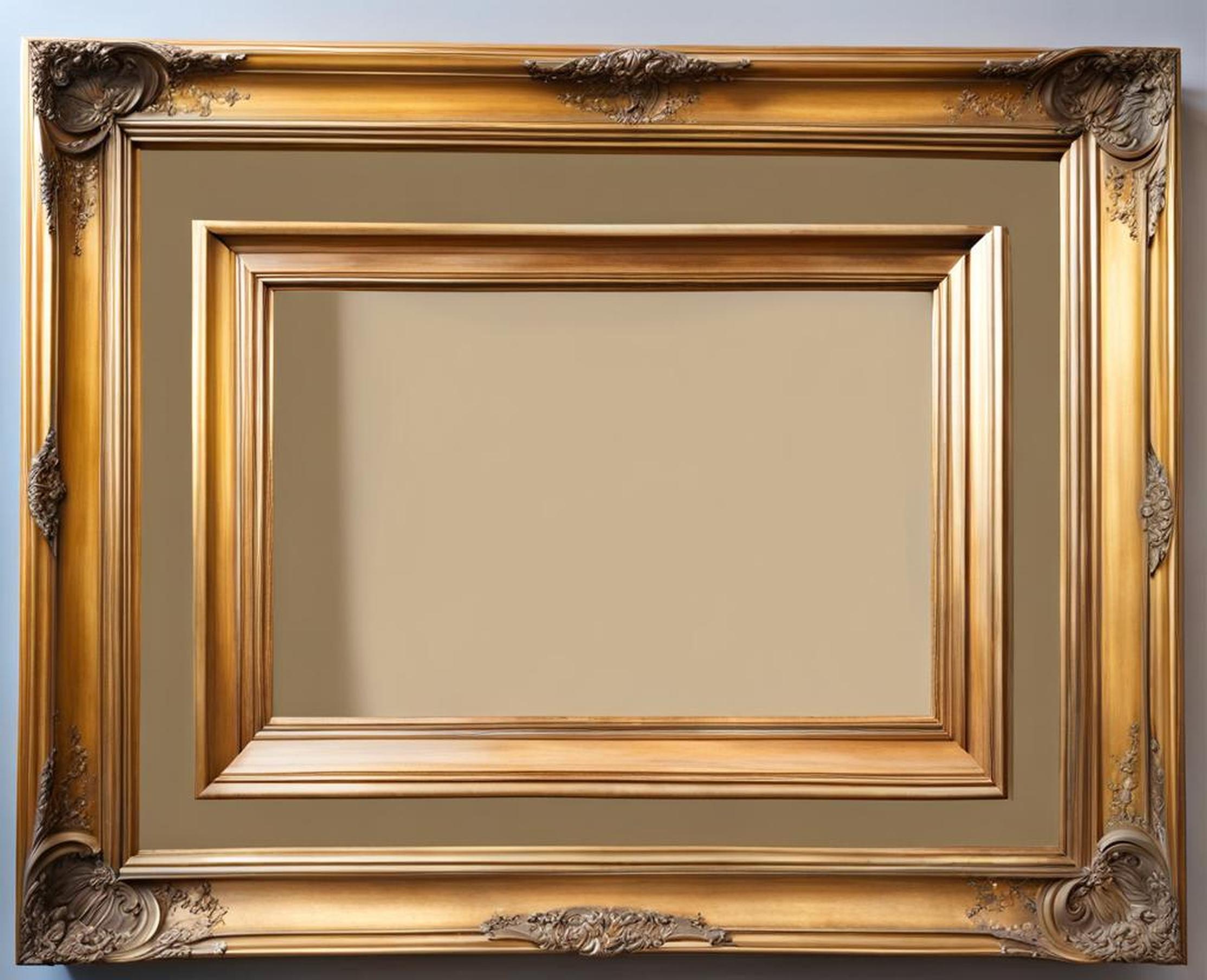Tired of those old, faded frames gathering dust around your home? With a simple coat of paint, you can transform your basic frames into stylish showpieces. The right type of paint hides flaws, brings out texture, and makes the colors in your photos and artwork pop. Read on as we detail the paints that work best for various frame materials so you can display your treasured memories and images in their best light.
Follow our step-by-step guide to prep, paint, and protect your picture frames–regardless of the surface material. With a little time and effort, ordinary frames become extraordinary.
Step 1: Prepare Your Frames Properly
Thorough Cleaning
Before painting, thoroughly clean your frames with soap and water to remove any dirt, oils, or old flaky paint. This helps the new paint adhere properly. For smoother results, lightly sand glossy plastic or metal frames to rough up the shiny surface so paint can grip better.
Sanding and Priming
Sand wood frames lightly to remove loose splinters or fibers and shine up dull areas. Apply a primer before painting for maximum adhesion. For metal, use a rust-inhibiting primer to prevent future rust spots.
Taping Off Sensitive Areas
Use painter’s tape to mask off any glass or backing you don’t want to paint. This keeps your work area neat and tidy.
Step 2: Pick the Right Paint for Each Frame Surface
Choosing paint suited to the frame surface ensures the paint sticks well and brings out the best look.
Best Paints for Wood Frames
Acrylic paint works beautifully to update wood frames with its bright colors and smooth consistency. It dries fast, making quick work of projects. Best results come from two coats. Avoid over-brushing.
Latex paint offers great durability on wood surfaces when properly primed first. It provides excellent adhesion and a uniform appearance but requires longer drying time between coats.

Chalk paint gives wood a trendy matte finish without requiring sanding or priming beforehand. The soft, porous look pairs perfectly with vintage and rustic decor. Distressing chalk paint when dry creates an aged, timeworn look.
Best Paints for Plastic Frames
Slick plastic surfaces shed liquid paints easily without proper prep. Spray paint offers great adhesion thanks to built-in primers and provides smooth, even coverage with a simple sweep of the can.
Acrylic also works well on plastic when applied carefully using multiple thin coats. Let dry fully between applications for durable results.
Best Paint Options for Metal Frames
Spray paint excels at covering metal evenly without drips or uneven texture issues. Epoxy spray paint makes metal frames nearly indestructible.
For colorful pops of gloss, enamel paint provides superior adhesion and a shiny yet resilient finish. Using a primer first prevents future rust or flaking.
Step 3: Brush Up on Pro Painting Techniques
Mastering key painting skills prevents amateur-looking results.
Applying Paint Smoothly and Evenly
Work in light layers, brushing back and forth gently to coat surfaces uniformly without drips or splatter. Thin coats provide better coverage than single thick coats which can peel easily.
Avoiding Drips and Splatters
When spray painting, keep the nozzle 8-10 inches from frame surfaces while spraying smoothly side to side. Overspray causes messy drips. With brushes, don’t overload with too much paint which can splatter if applied too heavily.
Drying and Second Coats
Let paint dry completely between back-and-forth coats for crisp results without tacky areas that smear. Drying times vary based on materials.
Step 4: Special Painting Effects for Added Dimension
Spice up basic colored frames with easy accents and textures.
Distressing
Create vintage appeal on wood and chalk paint finishes by intentionally rubbing paint away post-drying for an aged, timeworn look.
Dry Brushing
Lightly brush nearly dry paint bristles over surfaces to add delicate highlights and emphasize texture.
Stenciling
Use paper or plastic stencils to add patterns like designs, letters, and shapes on top of base paint layers.
Adding Texture
Mix sand or plaster into paint before applying for interesting dimensional texture. Try crackle medium over paint too.
Step 5: Seal and Protect Your Painted Frames
Preserve painted finishes and designs by sealing them in. Waterproof sealants prevent chipping, fading, and scratches.
Polyurethane makes an excellent protective topcoat for acrylic, latex, and chalk painted finishes. It comes in various sheens from matte to high-gloss. Spray sealants easily coat intricate frames without messy brushstrokes.
